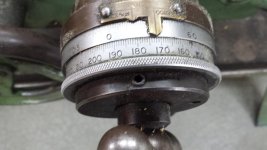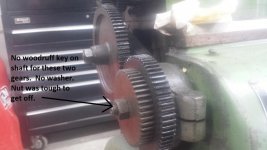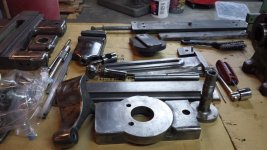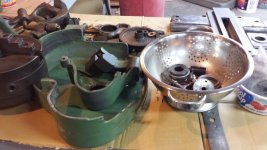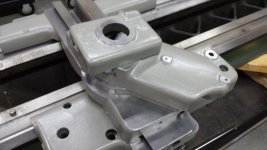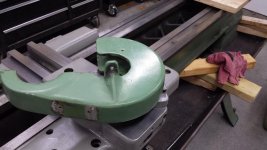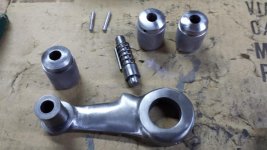jmofr
Aluminum
- Joined
- Sep 29, 2014
- Location
- Springfield Mo. area
I purchased this lathe a month ago and have been getting ready to began the restoration. I have been getting my basement workshop organized to have the space, tools, workbench area etc. to make the work a little easier since this will be my first lathe restoration. My inspiration for this restoration is Brad Jacobs 13" I think his is perfect.
I found this lathe on Craigslist and drove 850 miles round trip to pick it up. The lathe came out of a Chattanooga Votech school, so it has a couple of battle scars on the compound as you can see in the photo. The serial number says it was manufactured in 1982 so it is fairly new in terms of this style of South Bend. It does have quite a bit of backlash in the cross feed and compound and some wear on the half nuts. I've been buying new parts from Ted for the last couple of weeks. The ways have a slight ridge but not terrible.
I got several collets and a couple of live centers, 8" 3 jaw chuck and a steady rest. What I did not get and want is a follower rest and the collet closer which went somewhere else I guess.
Anyway here are a few photos:
I found this lathe on Craigslist and drove 850 miles round trip to pick it up. The lathe came out of a Chattanooga Votech school, so it has a couple of battle scars on the compound as you can see in the photo. The serial number says it was manufactured in 1982 so it is fairly new in terms of this style of South Bend. It does have quite a bit of backlash in the cross feed and compound and some wear on the half nuts. I've been buying new parts from Ted for the last couple of weeks. The ways have a slight ridge but not terrible.
I got several collets and a couple of live centers, 8" 3 jaw chuck and a steady rest. What I did not get and want is a follower rest and the collet closer which went somewhere else I guess.
Anyway here are a few photos:


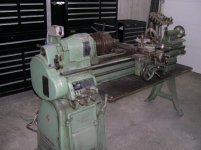



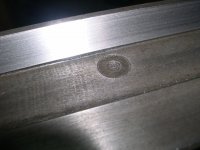


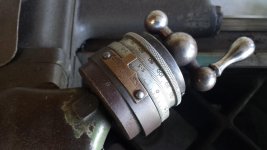
 He provided us with a "sticky" at the front of this forum that lists many restorations. His restoration is listed in the 13" group. It is the first one. I would link it if I could figure out how. I know it's easy and I've done it in other forums but I can't figure this one out.
He provided us with a "sticky" at the front of this forum that lists many restorations. His restoration is listed in the 13" group. It is the first one. I would link it if I could figure out how. I know it's easy and I've done it in other forums but I can't figure this one out.
